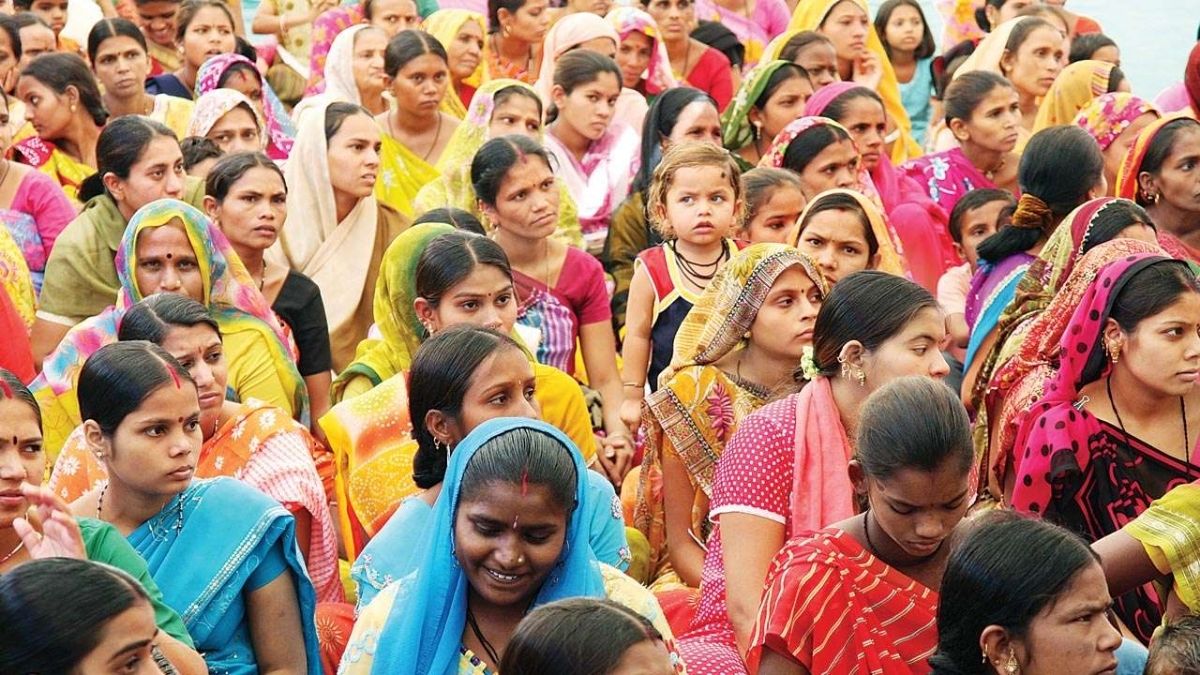
When the results of the National Family Health Survey (5), the most comprehensive survey conducted by the Government of India on the health of women and children, were released, data surprised everyone.
The survey found that there are 1,020 females for every 1,000 males. Earlier, in the 2011 census, 943 females were counted for every 1,000 males.
To understand this advantage, it is first important to note that this comparison is misleading. The National Family Health Survey is a 'sample survey' and the census is a 'count'.
About six lakh families were surveyed in the National Family Health Survey (5), while the census counts the country's 1.25 billion population.
Sangeeta Rege, the convener of the non-governmental organization 'Sehat' (CEHAT), which works on health-related issues in Mumbai, believes so and draws attention to another reason.
She says, "The National Family Health Survey does not take into account migration in its results when surveyed in households, the number of women can be found due to men working in another village or city."
Does this mean that the survey data is wrong?
This survey has been done by 'International Institute of Population Sciences' on behalf of the government.
Professor of 'Migration and Urbanization Studies' at the institute, R.B. Bhagat believed that the census is a more reliable method to know the female ratio of males and females.
He said, "There is always a possibility of sampling error in the sample survey which will not be counted in the population. When the next census is done, the female ratio should be better than 2011 but I don't see that much of an increase."
Sanjay Kumar, former director of the Center for Study of Developing Societies, a social concern research organization, is also surprised by the survey results but is convinced of its functioning.
Sanjay Kumar says, "The sample survey is done in a certain way and if the sample is carefully selected, it can give correct results even though it is small."
According to him, to understand the startling figure of 1020:1000, one has to study the results of different states and rural-urban.
So why is the proportion of females higher than males in the survey?
According to Sangeeta Rege, one of the reasons for this is the higher 'life expectancy at birth' of women.
According to the estimates of the Census Department of India for the year 2013-17, the 'life expectancy at birth' of women in India is 70.4 years while that of men is 67.8 years.
Along with this, the ratio of deaths occurring immediately after becoming pregnant and giving birth, 'Maternal Mortality Ratio' has also improved.
According to the information given by the Ministry of Health in the Lok Sabha, their surveys have found that this rate has come down from 130 deaths of mothers for every one lakh child in 2014-16 to 113 in 2016-18.
According to Professor Bhagat, one of the reasons could be that more information has been given to the surveys about women.
He says, “Earlier, women were not given importance in families, but in the last decades with the advent of several government schemes focused on women, there has been an increase in the practice of registering their names formally, which will reduce under-reporting and they are now in these counts. Will attend."
Today, the festival of Dhanteras is being celebrated across the country. On this day, Lord Dhanva
The havoc of Corona is increasing rapidly in North Korea. About 17 lakh people are corona positiv
The weather pattern has changed rapidly in the last few hours in the country. Apart from Delhi-NC
While the Indian team was awaiting the trophy after defeating Pakistan by five wickets in the Asi
ZEE5's yet another endeavor to keep its viewers and its customers afloat is the third season of i
Veteran industrialist and honorary head of Tata Sons Padma Vibhushan Ratan Tata passed away on We
UP Board Result 2022: Wait will end, UP Board result date may come today
UP Board Result 2022: The wait of students is increasing for the results of the UP Board 10th and
In the IPL 2026 mini-auction to be held in Abu Dhabi on Tuesday, Australia's Cameron Green appear
Is Iran moving towards accepting the Taliban?
On Sunday, a high-level delegation of the Taliban reached the Iranian capital Tehran to discuss e
Congress MP Shashi Tharoor on Tuesday said that the tariffs imposed by the Trump administration h